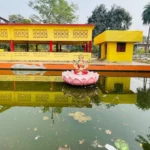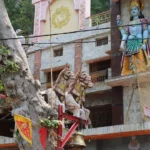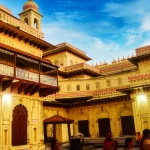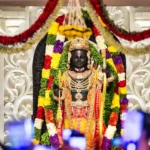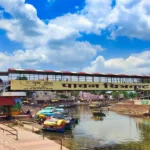Ram Janmabhoomi: Unearthing Historical Layers
Archaeological Discoveries at Ram Janmabhoomi: Bridging Myth and History
The Ram Janmabhoomi site in Ayodhya has been a subject of archaeological interest, with excavations revealing layers of history that offer insights into the site’s past. These archaeological endeavours have been pivotal in understanding the historical context of Ram Janmabhoomi, often intertwining with the religious beliefs surrounding the site.
One of the most significant archaeological undertakings at Ram Janmabhoomi was the discovery of remnants that suggest the presence of an ancient temple beneath the Babri Masjid. This finding has been crucial in substantiating the long-held belief among many Hindus that the site was originally the location of a temple dedicated to Lord Ram.
The artefacts and structural remnants unearthed during these excavations provided tangible evidence to support the narrative of Ram Janmabhoomi being a place of ancient religious significance.
The impact of these archaeological findings on the Ram Janmabhoomi dispute has been profound. They have added a historical dimension to the claims and counterclaims over the site, making the issue not just a matter of faith but also of historical and cultural identity.
The discoveries have played a role in shaping the legal and public discourse surrounding the Ram Janmabhoomi and Babri Masjid dispute, bringing to the forefront questions about the preservation of historical and religious heritage.

In addition to temple structures, various artefacts indicative of ancient cultural practices and rituals have been found at the site. These artefacts span a wide temporal range, suggesting the site’s continuous use and significance over many centuries. The archaeological evidence has thus not only highlighted the religious importance of Ram Janmabhoomi but has also shed light on the broader aspects of cultural and civilizational continuity in the region.
The archaeological findings at Ram Janmabhoomi have been instrumental in bridging the gap between faith and history, providing a tangible basis for understanding the site’s past. While these discoveries have been subject to different interpretations and have been a part of legal and political debates, they undoubtedly contribute to the rich tapestry of India’s historical narrative.
The ongoing research and studies at Ram Janmabhoomi continue to unravel the complex layers of history, offering a glimpse into the ancient past of one of India’s most revered and contested sites. The site remains a focal point for scholars, historians, and devotees alike, each seeking to understand and interpret its significance in their way.
Ram Janmabhoomi: The Legal and Political Odyssey
Ram Janmabhoomi Dispute: A Chronicle of Legal Battles and Judgments
The Ram Janmabhoomi site in Ayodhya has been at the heart of one of the most protracted and contentious legal battles in India’s history. This dispute, primarily involving the land where the Babri Masjid stood and the proposed site for the Ram Mandir, encapsulates a complex interplay of religious, historical, and political issues.
The legal saga of Ram Janmabhoomi spans several decades, marked by a series of lawsuits, verdicts, and political interventions. The core of the dispute revolves around the claim of the site being the birthplace of Lord Ram and the subsequent construction of a mosque, the Babri Masjid, on the same site by the Mughal Emperor Babur in the 16th century. This contention has sparked numerous debates and legal challenges over the ownership and significance of the land.
A landmark moment in the Ram Janmabhoomi legal journey was the Allahabad High Court’s verdict in 2010. This verdict was pivotal as it attempted to partition the disputed land into three parts – one part to the deity Ram Lalla, represented by the Hindu side, and the other two parts to the Sunni Waqf Board and the Nirmohi Akhara, representing Muslim and Hindu factions, respectively. This decision aimed at a compromise but set the stage for further legal contestation.
The legal discourse reached its zenith with the Supreme Court of India’s verdict in 2019. In this historic judgment, the court awarded the entire disputed land for the construction of the Ram Mandir, while also directing the government to provide an alternate five-acre plot to the Muslim community for the construction of a mosque.

This decision marked the culmination of a long-standing legal struggle, with significant implications for India’s socio-political landscape.
Throughout its legal history, the Ram Janmabhoomi dispute has not just been a matter of adjudicating land ownership but has also involved larger questions about secularism, religious freedom, and national identity. The legal proceedings and their outcomes have been closely intertwined with the country’s political dynamics, influencing and being influenced by the shifting political landscapes.
In summary, the legal journey of Ram Janmabhoomi is a testament to the complexity of resolving historical disputes in a diverse and democratic society like India. It highlights the intricate balance between legal reasoning, historical context, and societal sentiments, and the role of the judiciary in navigating these multifaceted challenges.
The resolution of the Ram Janmabhoomi dispute, through the lens of the legal system, remains a significant chapter in India’s contemporary history, reflecting the nation’s ongoing journey towards reconciling its rich and diverse heritage.











